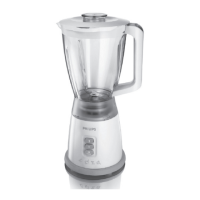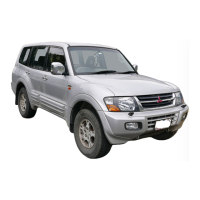Chapter 4 Fuel and exhaust systems
4-37
18 Multi-Point Injection (MPI) -general information
Some 1989 and all 1990 and later models are equipped with an elec-
tronic fuel injection system known as Multi-Point Injection (MPI). Aside
from slight differences in some emissions-related components, the MPI
systems used on 2.4L and 3.OL engines are virtually identical. Both are
computerized, electronically controlled fuel, ignition and emission control
systems. Their important sub-systems include air induction, fuel delivery,
fuel control, emission control and the engine control unit. Each system dif-
fers slightly in the type and location of these components.
Air induction system
The air induction system includes theaircleaner assembly, the throttle
body, the ductwork between the air cleaner and the throttle body, the
Throttle Position Sensor (TPS) and the Idle Speed Control (ISC) servo.
Fuel delivery sys tern
The fuel delivery system provides fuel from the fuel tank into the fuel
control system. It also returns any excess fuel back into the fuel tank. The
system includes an in-tank electric fuel pump, fuel filter and return line.
Fuel control system
The fuel control system includes the fuel pressure regulator, the fuel
rail and the fuel injectors. On MPI systems, the intake manifold supplies
air only; fuel is sprayed directly into the ports by the fuel injectors.
Emission controls and the engine control unit
The oxygen sensor, airflow sensor, intake air temperature sensor, en-
gine coolant temperature sensor, Throttle Position Sensor (TPS), idle po-
sition switch, crank angle sensor and barometric pressure sensor are all
important to the proper operation of the MPI system, but they’re more
closely related to emissions than to fuel. If you’d like to know more about
related emission control systems, particularly the information sensors and
the engine control unit, refer to Chapter 6.
19 Fuel injection system-check
Note:
the fool/owing procedure is based on the assumption, that the fuel
pressure is adequatk (see Section 3).
1 Checkall ground wire connections for tightness. Check all wiring har-
ness connectors related to the MPI system. Loose connectors and poor
grounds can cause many problems that resemble more serious malfunc-
tions. Also check all vacuum connections and make sure all vacuum
hoses are in good condition and not hardened, cracked or plugged.
2 Verify that the battery is fully charged; the engine control unit and the
information sensors depend on an accurate supply voltage to function
properly.
3 Check the air filter element-a dirty or partially blocked filter will se-
verely impede performance and economy (see Chapter 1).
4 Check for blown fuses. If a blown fuse is found, replace it and see if it
blows again. If it does, search the circuit for a short.
5 Look for leaks in the air intake duct between the air cleaner housing
and the throttle body and at the gasket between the throttle body and the
air intake plenum. Air leaks cause an excessively lean mixture. Also in-
spect all vacuum hoses connected to the throttle body and intake man-
ifold.
6 Remove the air intake duct from the throttle’body and check for dirt,
carbon or other residue build-up. If the throttle body is dirty (pay particular
attention to the area just inside the throttle plate), clean it with carburetor
cleaner and a toothbrush.
7 With the engine running, place a screwdriver against each injector,
one at a time, and listen through the handle for the clicking sound made by
the solenoid inside. This sound should be clearly audible at idle.
20.2 An exploded view of the throttle body assembly
and related components (2.4L engine)
I
2
3
4
5
6
7
8
9
IO
I1
Air intake hose
Breather hose
Wiring harness connector
Air intake pipe
Air hose
Accelerator cable
TV (kickdo wn) cable
Coolant hose
Vacuum hose(s) (California models
have extra hoses)
Throttle body
Gasket
.

